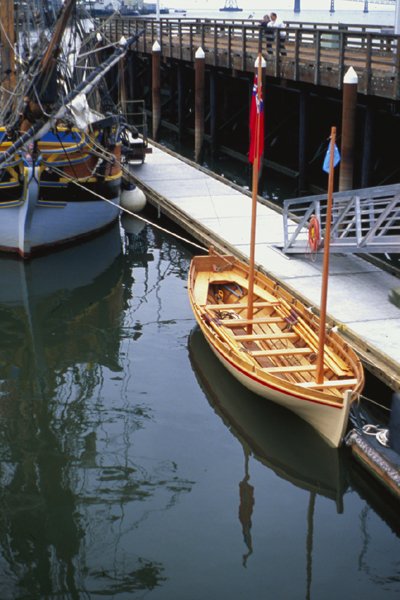25' English Royal Navy Cutter
Grant House Folk Art Center, Vancouver, Washington
The cutter on the first day of a ten-day journey reenacting the first European exploration of the Columbia River, part of the International Maritime Bicentennial of 1992.
-
In 1992 I built a replica of an English ship's boat, or cutter, that was used by an expedition led by Lieutenant William Broughton in the first European exploration of the Columbia River. The original expedition was in 1792 and I built the cutter in a city that owes its name to those first British explorers. The cutter was built over a period of six months, with volunteers, and over 20,000 people visited the site. The plans for the boat were provided by the National Maritime Museum in Greenwich, England.
-
After launching I led a reenactment of the original ten-day, 120-mile upriver journey, 200 years to the day of the original. With the Lady Washington, a replica ship from Aberdeen, Washington, flying the British flag and portraying Broughton's flagship HMS Chatham, we began our journey at the Columbia River Maritime Museum in Astoria, Oregon. On our way upriver to a spot where Broughton planted the British flag, we stopped at his historic campsites and left markers, where we were hosted and provided community lectures about Broughton's voyage. For two days of the journey we had favorable winds and sailed. Under oars, the cutter could easily average three miles per hour.
Read my article here to learn more.
-
Cutters were among the fastest type of ships boats then in use in the Royal Navy. Other boat types carried aboard ship were launches, galleys, gigs, barges and jolly boats. Cutters originated as smuggler's boats in the town of Deal, England and their hull shape is reminiscent of the later American whitehall.
The original boat would have been built of white oak and wych elm. The replica was built of native woods including Douglas fir backbone, Oregon white oak frames and Port Orford cedar planking.

The cutter at the dock in Astoria at the start of the reenactment.

The cutter was planked in Port Orford cedar.

Backbone of Douglas fir, bent frames of white oak.

The cutter rows past the former Trojan Nuclear Power Plant in Oregon.
